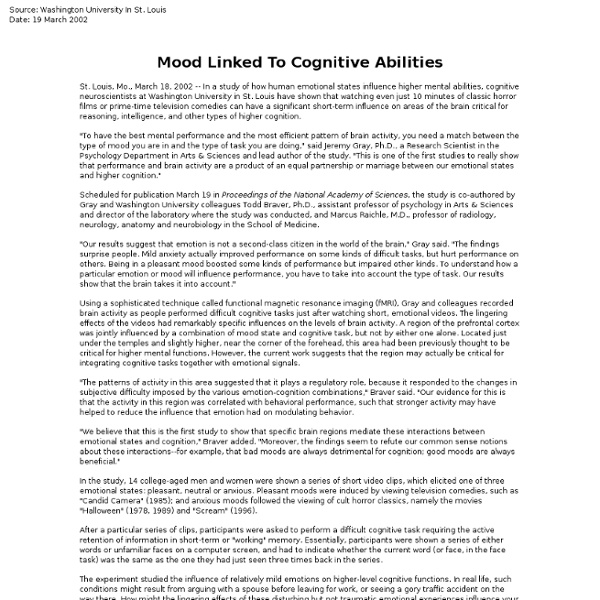Health research : mood and intellectual performance

First Person Plural - Magazine
An evolving approach to the science of pleasure suggests that each of us contains multiple selves—all with different desires, and all fighting for control. If this is right, the pursuit of happiness becomes even trickier. Can one self "bind" another self if the two want different things? Are you always better off when a Good Self wins? Imagine a long, terrible dental procedure. There is a good argument for saying “Yes. Also see: Interview: "Song of My Selves" Psychologist Paul Bloom reflects on happiness, desire, memory, and the chaotic community that lives inside every human mind. The psychologist and recent Nobel laureate Daniel Kahneman conducted a series of studies on the memory of painful events, such as colonoscopies. Such contradictions arise all the time. The question “What makes people happy?” But what’s more exciting, I think, is the emergence of a different perspective on happiness itself. But there is no consensus about the broader implications of this scientific approach.
We Feel Fine / mission
Mission We Feel Fine is an exploration of human emotion on a global scale. Since August 2005, We Feel Fine has been harvesting human feelings from a large number of weblogs. The result is a database of several million human feelings, increasing by 15,000 - 20,000 new feelings per day. The interface to this data is a self-organizing particle system, where each particle represents a single feeling posted by a single individual. At its core, We Feel Fine is an artwork authored by everyone. - Jonathan Harris & Sepandar Kamvar May 2006
Related:
Related:



